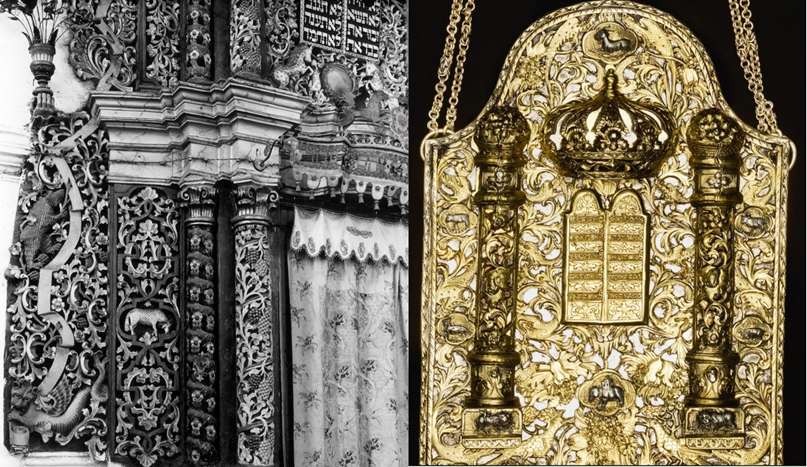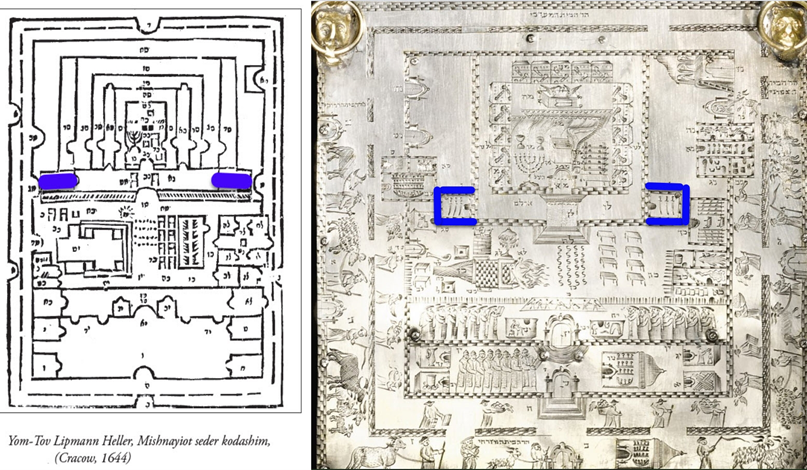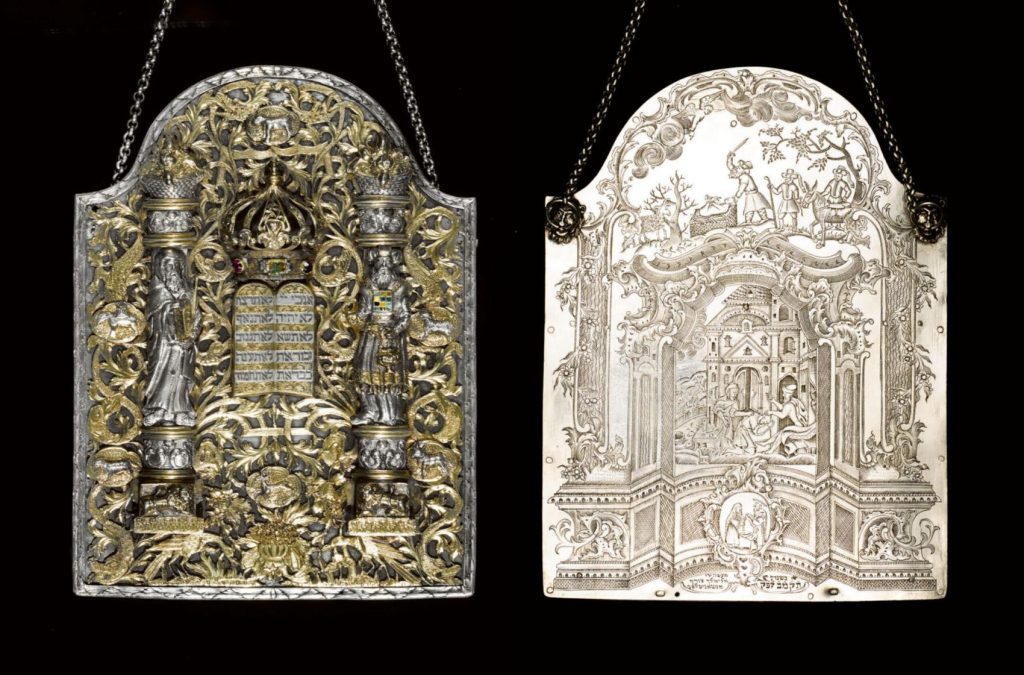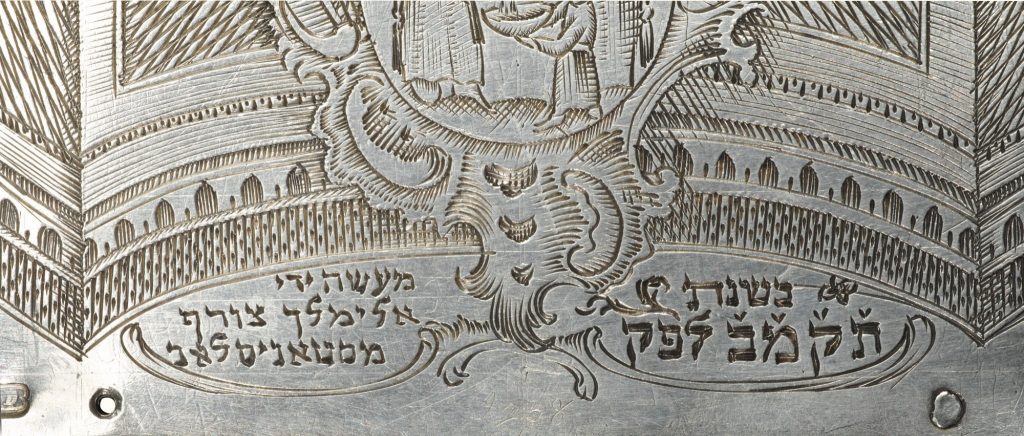Jewish treasures from Ukraine to be auctioned at Sotheby's for an astronomical sum
The sale of masterpieces of Jewish jewelry from Lviv and Galicia will take place in New York on 17 December 2020. The two gilt silver Torah shields (height: 18–20 cm), date to the late eighteenth century and are considered invaluable and uniquely beautiful.
The items to be auctioned by Sotheby's are part of the sale of a collection owned by Reuben David Sassoon (1834–1905), whose family was known as the "Rothschilds of the East." During the nineteenth and twentieth centuries, the Sassoons created an empire built on trade and finance, with branches of their firm in Baghdad, Mumbai, and Great Britain.
Reuben David Sassoon amassed a large collection of Jewish antiquities from various parts of the world. He first displayed his treasures at the Anglo-Jewish Historical Exhibition in 1887, held at the Royal Albert Hall in London. Later these gilt silver shields from Galicia were shown at an exhibit in London in 1906. Subsequently, they were not exhibited to the public for 114 years.
These objects were handed down through six generations of the Sassoon family. Thus, the reliability of their provenance makes them all the more valuable.
The Sassoon collection contained three shields from Galicia. In 2000 one of them was sold by Sotheby's in Tel Aviv. It caused a sensation and was sold for the then record-breaking sum of 800,000 dollars. Today it is held at the Israel Museum.
One of the two gilt silver shields slated for auction in New York is signed and dated in Hebrew: "Made by Elimelekh Tzoref of Stanislav" [Stanyslaviv], the year 5542" (1782). In Hebrew, tzoref means "jeweller." This word may denote the master craftsman's profession as well as a family name if his forefathers were also jewellers.
The indication of the city of Stanislav [today: Ivano-Frankivsk in western Ukraine] mostly means that it was the jeweller's birthplace, not the place where the shield was created. This shield and its "brother" in the Israel Museum bear Austrian tax marks dating to 1806–1807 in Lemberg [today: Lviv]. According to experts at Sotheby's, all three shields fashioned by the master craftsman Elimelekh of Stanislav were commissioned by a wealthy individual in Lviv, where the largest Jewish community of Galicia was based.
The name Elimelekh appears only on one shield, but the characteristic stylistic features allow us to conclude that all three shields were created by one and the same master craftsman.
The shields fire the imagination with their lush ornamentation and sophisticated workmanship featuring azure columns, Moses and Aaron, the Tablets of the Law, fruits, birds, lions, bears, leopards, deer, oxen, sheep, and even an elephant. The depiction of the bear alludes to the words of the prophet Isaiah (11:7), according to which evil will be destroyed in the Messianic age, "and the cow and the bear shall graze together; their young ones shall lie down together."
Sotheby's experts note the similarity between the images depicted on the shield and the beautiful ornaments adorning the synagogue located in the town of Lukiv (in Polish once known as Maciejów) in Volyn oblast, which were created in 1781, one year after the completion of the shield. Elimelekh was acquainted with the artist who decorated this Volynian synagogue or even took part in designing it.

In their description of this shield, Sotheby's experts cite Dr. Sergey Kravtsov, a well-known Israeli specialist in the history of the art and architecture of Ukrainian synagogues and a Research Fellow at the Center for Jewish Art at the Hebrew University of Jerusalem.
In a special commentary given to UJE, Dr. Kravtsov discussed the riddles and features of the detailed plan of the Temple in Jerusalem, which is engraved on the inner part of the second shield.
The scholar noted the role of a Talmudic scholar from Prague, Rabbi Yom Tov Heller (1579–1654), one of the greatest Jewish religious authorities in Europe. After being unjustly denounced to the authorities, he departed to the Ukrainian lands. In 1631 he became the rabbi of Nemyriv, in Podilia, and in Volodymyr-Volynsky. Many generations of his descendants were rabbis in the cities of western Ukraine.
In 1644 Rabbi Yom Tov Heller published a book in Cracow about the ancient Temple in Jerusalem. In his illustrations, Heller for the first time depicted two rooms in which were stored temple knives pointing to the south and north of the central part of the Temple. The knives were used in the Temple for the ritual kosher slaughter of animals brought to the altar.
Heller's drawing contradicted the views of the great twelfth-century Jewish scholar Rambam, according to which the temple building was square, without side projections. From the mid-seventeenth century, Heller's interpretation of the building's design became widely accepted throughout the Jewish world.
Dr. Kravtsov notes that the plan of the Temple as depicted by the jeweller Elimelekh, is engraved precisely on the basis of Yom Tov Heller's drawing.

Furthermore, the Israeli expert put forward an interesting hypothesis to explain that the model of the Temple's structure featuring side rooms—"shoulders"—was reflected in the architecture of some synagogues in Galicia and Volyn.
For example, in the Great Synagogue in Ostroh (Rivne oblast), the side extension was occupied by butchers. In the Great Synagogue located in the town of Vyshnevets (Ternopil oblast), symmetrical side rooms were used by tailors and other craftsmen.
Dr. Kravtsov believes that Jewish guilds of butchers and tailors could poetize their professions and their instruments (knives and scissors) and to allegorically perceive their individual prayer rooms as side rooms for knives in the ancient Temple.
The gilt silver shields created by Elimelekh of Stanislav, which have been put up for auction by Sotheby's, are not only extraordinarily beautiful but also filled with deep mystical content.
The starting bid for these works of Galician jewelry is between 350,000 and 420,000 U.S. dollars, and experts say the final price may reach a million U.S. dollars for each of the two gilt silver shields.
Text: Shimon Briman (Israel).
Photos: Official website of Sotheby's Auction House
Translated from the Ukrainian by Marta D. Olynyk.
Edited by Peter Bejger.





















